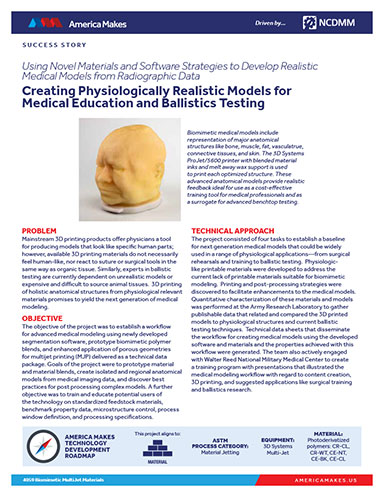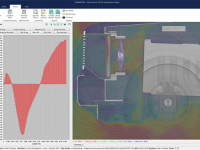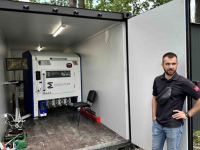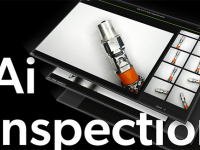
September 16, 2019
PROBLEM
Mainstream 3D printing products offer physicians a tool for producing models that look like specific human parts; however, available 3D printing materials do not necessarily feel human-like, nor react to suture or surgical tools in the same way as organic tissue.
Similarly, experts in ballistic testing are currently dependent on unrealistic models or expensive and difficult to source animal tissues. 3D printing of holistic anatomical structures from physiological relevant materials promises to yield the next generation of medical modeling.
OBJECTIVE
The objective of the project was to establish a workflow for advanced medical modeling using newly developed segmentation software, prototype biomimetic polymer blends, and enhanced application of porous geometries for multijet printing (MJP) delivered as a technical data package.
Goals of the project were to prototype material and material blends, create isolated and regional anatomical models from medical imaging data, and discover best practices for post processing complex models. A further objective was to train and educate potential users of the technology on standardized feedstock materials, benchmark property data, microstructure control, process window definition, and processing specifications.
Fill out the information below to download the resource.
Latest News







